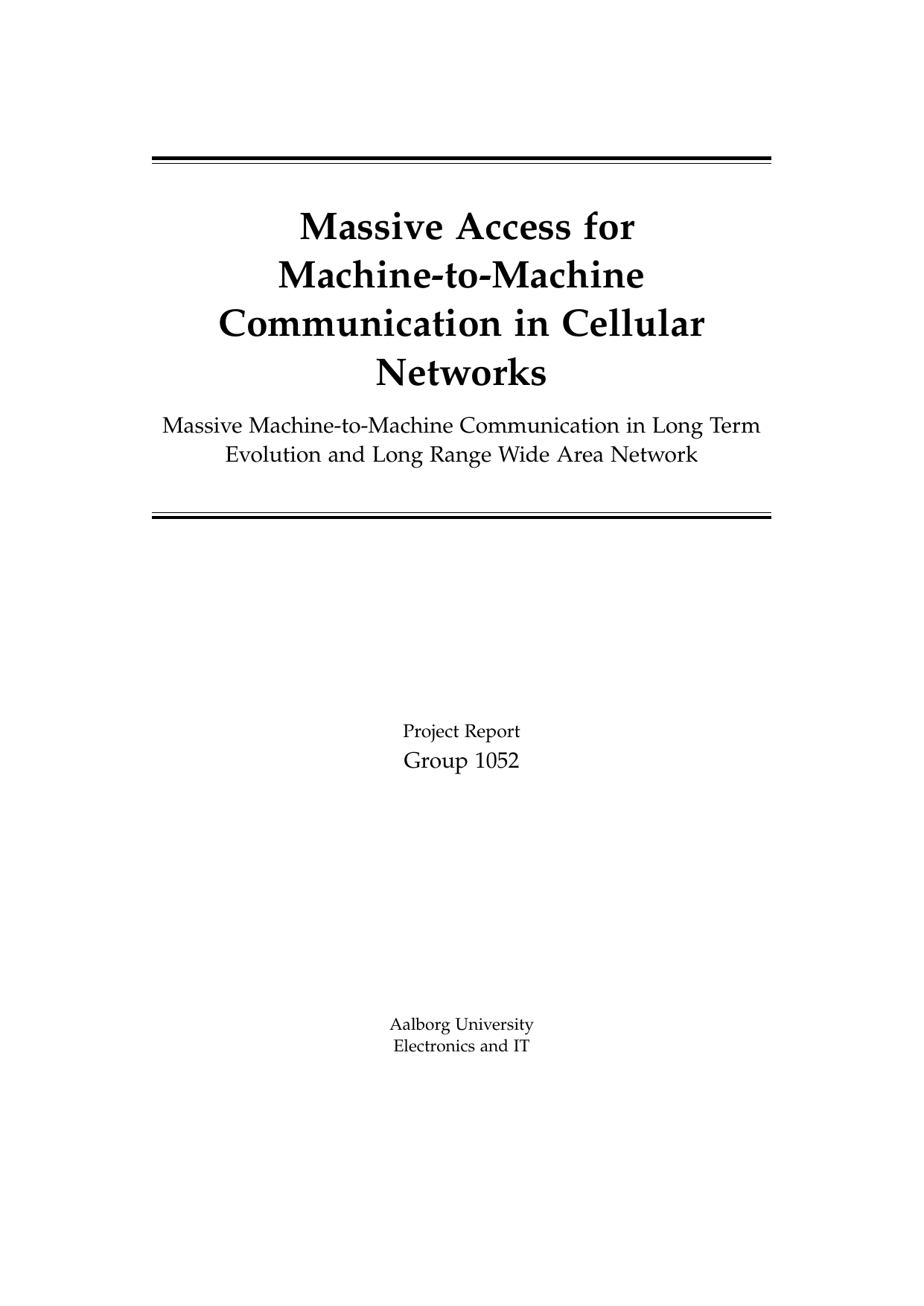
Massive Access for Machine-to-Machine Communication in Cellular Networks: Massive Machine-to-Machine Communication in Long Term Evolution and Long Range Wide Area Network
Author
Term
4. term
Education
Publication year
2016
Submitted on
2016-06-01
Pages
62
Abstract
In this report a traffic model for massive low-rate machine-to-machine communications is presented and used in an evaluation of LTE-MTC and LoRaWAN. Outage and latency for both LTE-MTC and LoRaWAN are obtained through simulation and a tractable model for LoRaWAN is found through analysis. A transmission scheme in which transmissions occur in parallel by LTE-MTC and LoRAWAN is also analysed as is a scheme in which LoRaWAN is used to form capillary networks within an LTE-MTC cell. LTE-MTC is found to provide a high capacity, low latency network capable of handling a high device density while LoRaWAN is found to provide a lower capacity, in general higher latencies and accommodate only low device densities. A trade-off must be made between cost and QoS requirements at the device-side to chose technology.
In this report a traffic model for massive low-rate machine-to-machine communications is presented and used in an evaluation of LTE-MTC and LoRaWAN. Outage and latency for both LTE-MTC and LoRaWAN are obtained through simulation and a tractable model for LoRaWAN is found through analysis. A transmission scheme in which transmissions occur in parallel by LTE-MTC and LoRAWAN is also analysed as is a scheme in which LoRaWAN is used to form capillary networks within an LTE-MTC cell. LTE-MTC is found to provide a high capacity, low latency network capable of handling a high device density while LoRaWAN is found to provide a lower capacity, in general higher latencies and accommodate only low device densities. A trade-off must be made between cost and QoS requirements at the device-side to chose technology.
Keywords
M2M ; IoT ; LoRa ; LTE ; LTE-M ; Traffic model ; LoRaWAN ; LPWAN ; LTE-A ; RANs ; Simulation ; Architecture ; Networks ; Radio ; Wireless
Documents
